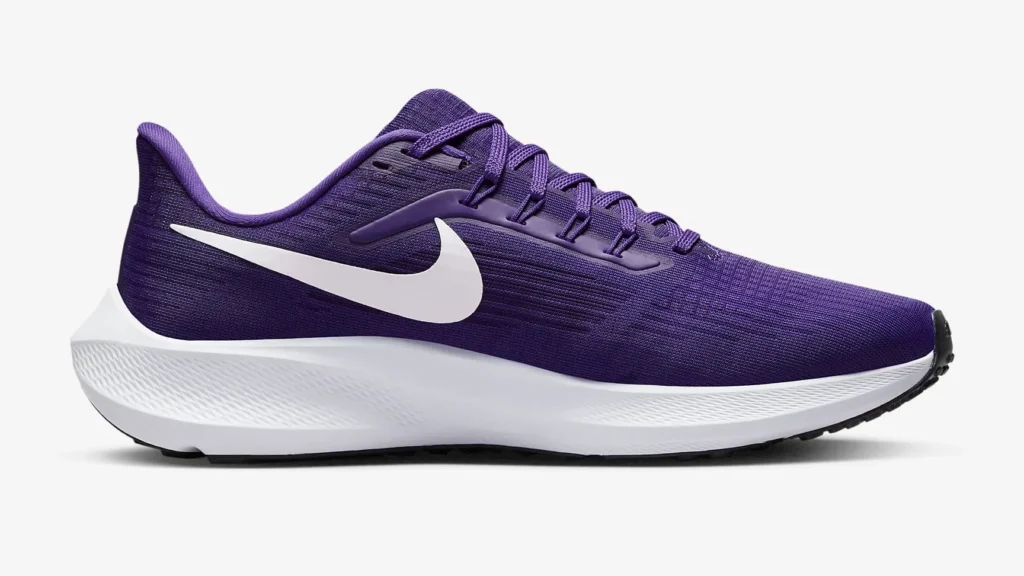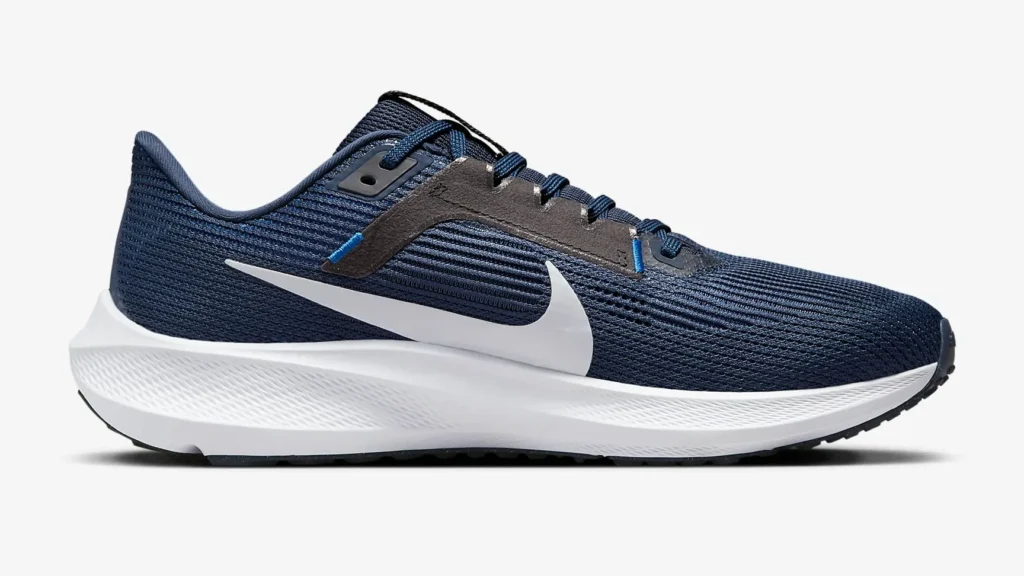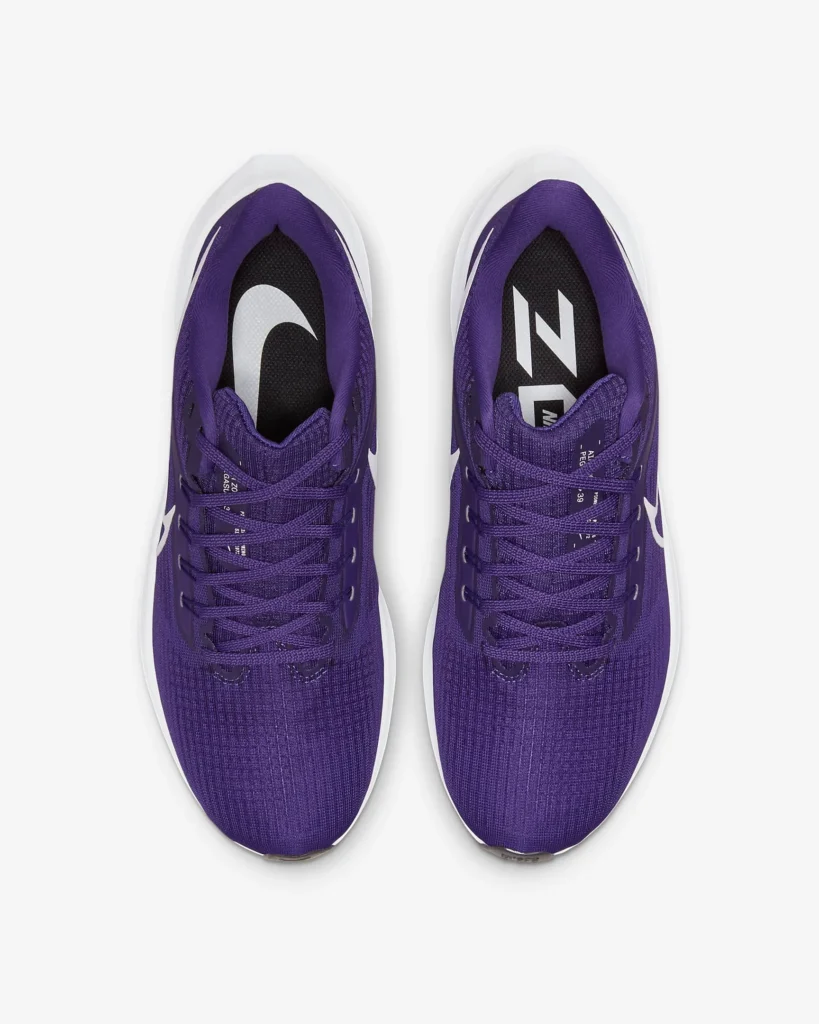Running enthusiasts, lace up your shoes because we’re about to dive into a battle of the sneakers! The Nike Pegasus 39 and 40 have been fan favorites for years, but which one truly reigns supreme? These iconic kicks promise a perfect blend of comfort, support, and performance, making them a go-to choice for many runners.
As Nike continues to innovate, each new model aims to elevate your running experience. Get ready to uncover the nitty-gritty details as we compare these two powerhouses side by side, helping you decide which pair is the better fit for your next stride.
Comparison Table between Nike Pegasus 39 and Pegasus 40:
| Criteria | Nike Pegasus 39 | Nike Pegasus 40 |
|---|---|---|
| Launched In: | 2022 | 2023 |
| Stability: | Moderate | Moderate |
| Flexibility: | Good | Excellent |
| Sizing: | True to Size | True to Size |
| Weight: | 10.4 oz (Men’s), 9.2 oz (Women’s) | 10.2 oz (Men’s) |
| Cushion: | React foam with 2 Zoom Air units | React foam with Forefoot & Heel Zoom Air units |
| OutSole: | Rubber with waffle pattern | Rubber with waffle pattern |
| MidSole: | React foam | React foam |
| Upper: | Engineered mesh | Engineered mesh |
| Retail Price: | $130 | $130 |
Features Comparison:
1) Materials: Outsole, Insole, Upper
The Pegasus 39 features a durable rubber outsole with Nike’s iconic waffle pattern for excellent traction and flexibility. Its insole is plush and cushioned, ensuring your feet stay comfortable. The upper utilizes engineered mesh for lightweight breathability.


On the other hand, the Pegasus 40 boasts an upgraded upper that has been re-engineered for improved airflow, allowing better ventilation to keep your feet cooler and drier during intense activities.
Like its predecessor, it features a tough rubber outsole with a waffle pattern and a plush, cushioned insole. When it comes to premium materials, Nike has crafted durable yet high-performance uppers and outsoles for both models.
2) Durability:
Nike is renowned for crafting high-quality, long-lasting shoes, and the Pegasus 39 and 40 are no exception. Both models feature durable engineered mesh uppers designed to withstand the rigors of regular use, ensuring they’ll accompany you on many miles of running or walking adventures.
The robust rubber outsoles on these sneakers are also built to endure, providing reliable traction and flexibility even after extensive wear. With proper care and maintenance, you can expect the Pegasus 39 and 40 to deliver consistent performance for an extended period, making them a wise investment for any avid runner or fitness enthusiast.
3) Fit:
The Pegasus 39 features Nike’s signature MR-10 Last, designed to provide a consistent and comfortable fit. The Pegasus 40, on the other hand, has a redesigned midfoot section that offers an even more secure and forgiving sensation.


While the 39 delivers a great fit, the updated midfoot on the 40 takes it a step further, allowing your foot to stay locked in place and reducing the risk of rubbing or slippage during intense activities. This improvement ensures your foot remains snug and supported throughout your workout or run.
4) Cushioning
When it comes to cushioning, both models excel with Nike’s React foam midsole, providing a smooth and energized ride. However, the Pegasus 40 takes it up a notch with Zoom Air units in both the forefoot and heel, offering an extra bounce and responsiveness.
The Pegasus 39, while still incredibly cushioned, features dual Zoom Air units in a different configuration. This gives the 40 an edge for those seeking a more lively, springy sensation with each stride.
5) Stability:
Both the Pegasus 39 and 40 offer moderate stability, making them suitable for neutral runners or those seeking a little extra support. The Flywire technology integrated with a midfoot band in the 39 helps keep your foot in place, while the redesigned midfoot section in the 40 enhances stability and support even further.
However, runners with severe overpronation or underpronation may want to consider more specialized stability shoes from Nike or other brands to better accommodate their specific needs.
6) Value for Money:
At $130, both the Pegasus 39 and 40 offer excellent value for money, considering the high-quality materials, cushioning technologies, and overall performance.
Nike has a reputation for delivering top-notch running shoes, and these models are no exception. Whether you’re a casual runner or a seasoned athlete, you can expect to get your money’s worth with either of these shoes.
Performance Comparision:
1) For Walking:
Both the Pegasus 39 and 40 are excellent options for walking, thanks to their cushioned midsoles and flexible outsoles. The React foam provides a responsive and energized feel, while the Zoom Air units add an extra bounce to your stride.
However, the Pegasus 40’s redesigned midfoot may give it a slight edge for walking, as it offers a more secure and forgiving fit, reducing the risk of foot fatigue during long walks.
2) For Running:
When it comes to running, both shoes shine. The combination of React foam and Zoom Air units delivers a smooth, responsive ride, making them suitable for various distances and paces.
However, the Pegasus 40’s additional Zoom Air unit in the forefoot may give it an advantage for runners who prioritize a more energetic and bouncy toe-off. Additionally, the improved breathability of the Pegasus 40’s upper could make it a better choice for runners who tend to overheat during intense workouts.
3) For Standing All Day:
If you spend a significant portion of your day on your feet, both the Pegasus 39 and 40 can provide the necessary comfort and support. The cushioned midsoles and responsive React foam help absorb impact and reduce fatigue, while the plush collars and tongues ensure a comfortable fit around the ankle.
However, the Pegasus 40’s redesigned midfoot could give it an edge for prolonged standing, as it offers a more secure and forgiving feel, potentially reducing the risk of foot pain or discomfort.
4) For Plantar Fasciitis:
While neither the Pegasus 39 nor the 40 are specifically designed for plantar fasciitis, their cushioning and support features can help alleviate some of the discomfort associated with this condition.
The React foam and Zoom Air units provide ample shock absorption, reducing the stress on the plantar fascia, while the plush insoles offer additional underfoot cushioning. However, individuals with severe plantar fasciitis may want to consider more specialized shoes or orthotics prescribed by a podiatrist.
Conclusion: Which Is Better for You?
The Nike Pegasus 39 is a tried-and-true workhorse that has earned its reputation as a reliable running companion. Its combination of cushioning, support, and durability make it a solid choice for runners of all levels.
However, the Pegasus 40 takes things a step further with its improved breathability, redesigned midfoot for a more secure fit, and additional Zoom Air unit in the forefoot for an extra bounce.
While the 39 remains a fantastic option, the 40 offers a slight edge in terms of overall performance and comfort. Ultimately, both models are excellent, and the choice between them comes down to personal preference and specific needs.

